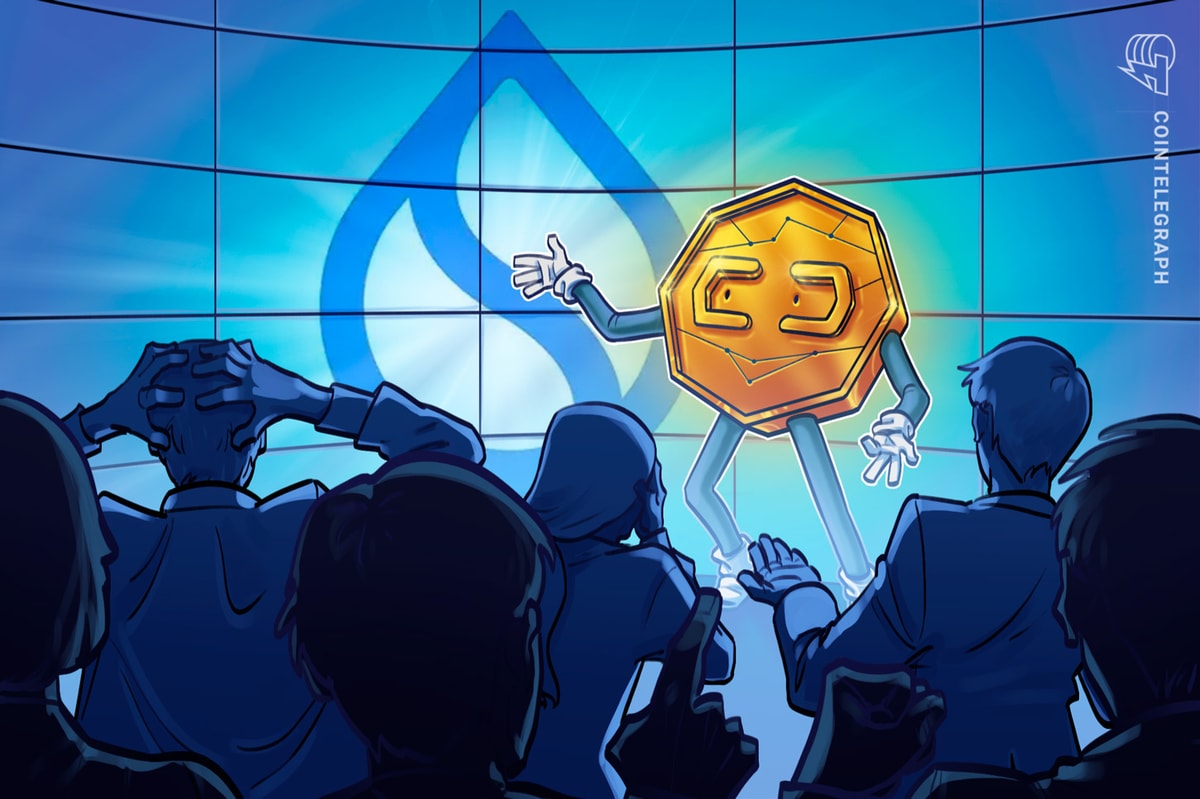
ozgurdonmaz/iStock Unreleased via Getty Images
Crypto winter continues as investors close out 2022. We can only speculate whether we’ve seen the depths of the bear or if there are deeper token price discounts to come in 2023. Despite the severity of year-to-date drawdowns in most crypto-based assets, one network that has seen substantial growth over the last several months is Arbitrum.
What is Arbitrum?
Arbitrum is an Ethereum (ETH-USD) Layer 2 scaling chain that utilizes optimistic rollups. Because of the low TPS drawback of Ethereum, secondary layer blockchains like Arbitrum and Polygon (MATIC-USD) are necessary to truly scale the Ethereum network. Arbitrum is able to increase transactions per second by batching transactions together and considerably reducing the user fees associated with conducting activity on the Ethereum blockchain.
Arbitrum’s core developer is Offchain Labs. The developers envision Arbitrum’s optimistic rollups main function to be scaling Ethereum in a decentralized manner:
its design is geared heavily toward avoidance of introducing any centralization or trust assumptions, and it is thus a clear, strict net-win for the Ethereum ecosystem.
Arbitrum is unique among many of the Ethereum scaling chains in that it doesn’t have a native token. The Arbitrum users and developers can bridge Ethereum or stablecoins to Arbitrum and conduct transactions on the secondary chain without paying gas through any L2 chain-native currency; this would be counter to a network like Polygon which utilizes the MATIC token for gas on the secondary chain.
Arbitrum Network Growth
Arbitrum has experienced rather explosive growth in daily active users. According to Token Terminal, the average for the current week is over 74k DAUs. This is up 25% from 59k DAUs during the previous week and up nearly 14x from the 5k during the same week a year ago.

Arbitrum DAUs (weekly average) (Token Terminal)
This growth in users has helped drive greater share of Layer 2 transactions. When stacking the transactions on Optimism and Arbitrum with the transactions on Ethereum, we can see that not only are we getting more ecosystem transactions in aggregate, but a greater share of those transactions are happening on Arbitrum:

Layer 2s vs ETH (Dune Analytics/Marcov)
Excluding December because we still have several weeks remaining before the data will be final, each of the last 3 months have seen significant moves higher in the amount of transactions happening on both Arbitrum and Optimism. However, Arbitrum is growing slightly quicker. Arbitrum and Optimism were essentially at parity in August with a little over 2.4 million transactions each. By the end of November, Arbitrum accounted for 8.1 million transactions – nearly 2 million more than Optimism.
These transactions represent a fairly diverse set of on-chain interactions. Arbitrum has seen growth in its NFT footprint over the last several weeks. The table below is sorted by buyers:
| Blockchain | NFT Sales Volume | Buyers | Buyer Change |
|---|---|---|---|
| Ethereum | $432.8 million | 112k | -18% |
| Solana (SOL-USD) | $57 million | 70k | -57% |
| Binance (BNB-USD) | $4.4 million | 26.2k | +80% |
| Arbitrum | $979k | 23.2k | +122% |
| Flow (FLOW-USD) | $5.2 million | 19.7k | -15% |
Source: CryptoSlam, last 30 days
The NFT market on Arbitrum has produced over 23k buyers over the last 30 days; up 122% from the prior period against a total NFT market that is down 25%. That buyer figure also puts Arbitrum as the 4th ranked blockchain by unique buyers behind only Ethereum, Solana, and Binance Smart Chain. Despite the large move in buyers, the NFT sales volume on Arbitrum is well below peers at a little under $1 million. From the outside looking in, the early Arbitrum NFTs seem more geared toward a lower-cost buyer. This is a market that has been served well by Solana in the past.
From a DeFi perspective, Arbitrum is a top 5 chain in the raw USD value figures:

Arbitrum TVL (DeFi Llama)
On November 14th, Arbitrum was the 6th largest chain by TVL. A month later, Arbitrum has passed both Polygon and Avalanche (AVAX-USD) with $1.1 billion in total value locked as of submission.
| Rank | Blockchain | DeFi Protocols | TVL | 1m TVL Change | Protocol Dominance |
|---|---|---|---|---|---|
| 1 | Ethereum | 612 | $24.62b | -4.90% | 26.1% |
| 2 | Binance | 512 | $4.46b | -13.27% | 52.9% |
| 3 | Tron (TRX-USD) | 11 | $4.4b | -1.14% | 65.0% |
| 4 | Arbitrum | 149 | $1.11b | 24.39% | 39.6% |
| 5 | Polygon | 347 | $1.06b | -4.09% | 24.8% |
| 6 | Avalanche | 277 | $847.17m | -11.02% | 39.1% |
| 7 | Optimism (OP-USD) | 92 | $550.05m | -11.11% | 18.9% |
| 8 | Fantom (FTM-USD) | 269 | $463.33m | 9.19% | 20.6% |
| 9 | Cronos (CRO-USD) | 86 | $425.07m | -40.18% | 44.1% |
| 10 | Solana | 91 | $290.67m | -16.70% | 31.3% |
Source: DeFi Llama
Arbitrum has been quickly moving up the ranks in dollar-denominated TVL and has been one of the fastest growing chains by that metric over the last month. It’s one of just 2 chains in the top 10 to have positive TVL performance in the last 30 days when denominated in dollars.
Risks
TVL is a decent way to measure a blockchain’s DeFi footprint but there are other metrics to consider when assessing a chain’s TVL. For instance, a healthy DeFi footprint shows diversification of TVL spread throughout various protocols. While Arbitrum has almost 150 protocols on the network, nearly 40% of Arbitrum’s DeFi footprint is coming form a single protocol. That protocol is GMX (GMX-USD) and I’ve expressed concerns about that project in BlockChain Reaction.
GMX is one of the more hyped crypto projects this year and has served as an Arbitrum proxy for speculators who can’t gamble on Aribtrum’s growth through a native token. I don’t believe GMX has systemic risk to Arbitrum but it is something to keep in mind as some of the network usage growth is coming from a protocol that might have problematic tokenomics.
Summary
Arbitrum has been one of the few bright spots in the broader public blockchain market lately. We’ve seen Ethereum scaling solutions do far better from a user growth perspective than some of the high throughput Layer 1 chains that compete with Ethereum more directly. In my view, Arbitrum’s lack of a native token could be an indication that the core development team’s goals are a bit more in line with what proponents of public blockchain as a legitimate utility might be looking for. Namely, building solid infrastructure and worrying less about ‘number go up’ from a coin dumped on retail investors.
Of course, given the lack of a native token, one can’t really “invest” directly in Arbitrum through crypto rails. I believe the best way to gain exposure to Arbitrum is through applications built directly on Arbitrum or through simply buying Ethereum. In crypto winter, the latter is the far safer play.
Read More: news.google.com








 Bitcoin
Bitcoin  Ethereum
Ethereum  Tether
Tether  XRP
XRP  Solana
Solana  USDC
USDC  Dogecoin
Dogecoin  TRON
TRON  Cardano
Cardano  Lido Staked Ether
Lido Staked Ether  Wrapped Bitcoin
Wrapped Bitcoin  Hyperliquid
Hyperliquid  Sui
Sui  Wrapped stETH
Wrapped stETH  Chainlink
Chainlink  Avalanche
Avalanche  Stellar
Stellar  Bitcoin Cash
Bitcoin Cash  LEO Token
LEO Token  Toncoin
Toncoin  Shiba Inu
Shiba Inu  USDS
USDS  Hedera
Hedera  WETH
WETH  Litecoin
Litecoin  Wrapped eETH
Wrapped eETH  Polkadot
Polkadot  Binance Bridged USDT (BNB Smart Chain)
Binance Bridged USDT (BNB Smart Chain)  Monero
Monero  Bitget Token
Bitget Token  Ethena USDe
Ethena USDe  Pepe
Pepe  Pi Network
Pi Network  Coinbase Wrapped BTC
Coinbase Wrapped BTC  WhiteBIT Coin
WhiteBIT Coin  Dai
Dai  Bittensor
Bittensor  Aave
Aave  Uniswap
Uniswap  Ethena Staked USDe
Ethena Staked USDe  Cronos
Cronos  OKB
OKB  Aptos
Aptos  NEAR Protocol
NEAR Protocol  Jito Staked SOL
Jito Staked SOL  BlackRock USD Institutional Digital Liquidity Fund
BlackRock USD Institutional Digital Liquidity Fund  Tokenize Xchange
Tokenize Xchange  Internet Computer
Internet Computer  Ondo
Ondo